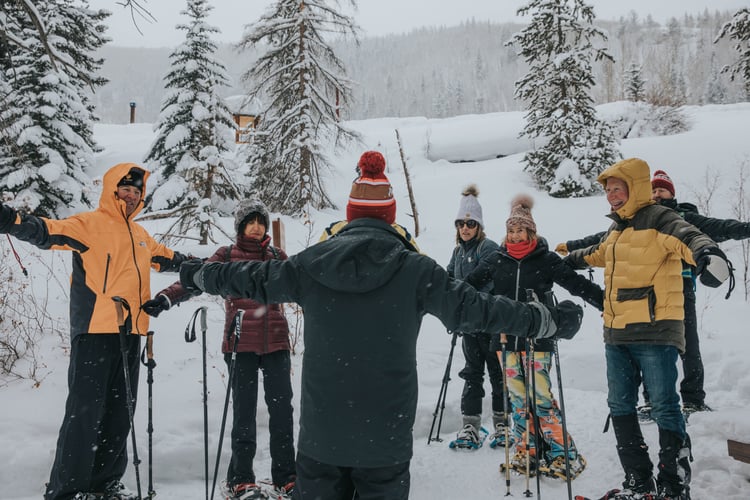Skiing and snowboarding feel like an inescapable facet of life here in the Eagle River Valley. Walking down the street you're almost guaranteed to hear the clacking of ski boots or see people waiting to ride the bus with a board in hand. What you are less likely to see, however, is a group of people gathered in the park for snowshoeing. Snowshoeing may seem like the neglected cousin of the more popular winter sports, but it used to be quite the opposite.
Snowshoes have a rich and varied history. Different snowy regions of the world all developed distinct styles of snowshoes reflective of their environment. In North America in particular, snowshoes became a large part of many Indigenous cultures and allowed for easier living in harsh winter conditions. Compared to many other cultures, North American snowshoe designs were highly advanced and far more diverse1.

Older snowshoes designs are beautifully crafted.
Traditional snowshoes usually consisted of a bent wooden frame woven tightly with animal hide, but the design varies wildly based on location and snow conditions. For example, the Ute people who inhabited the mountains in Colorado and Utah needed to navigate the dense alpine forests cluttered by dead and downed trees. Moving through tight areas like this made large snowshoes less desirable. This led them to utilize a style known as bear paw, which is very maneuverable but does not allow for easy movement over long distances. It also allowed for easier climbing of mountains, as the front toe section could be easily jammed into the side of a steep slope to make a “step” of sorts2.
In contrast to the smaller bear paw style, the large and heavy Yukon style used by Athabascan tribes could be nearly three times as long. Sometimes reaching a length of 6 feet, they had teardrop-like shapes, usually with a longer rudder at the tail for extra stability and an upturned nose to prevent toe clipping. While these styles would be poorly suited for traversing dense forests, they excel at traveling quickly over long distances. Some sources even suggest they were used to help wearers keep up with dog sleds3.
In the early stages of North American colonization, both Canadian and American peoples realized the significance of having reliable wintertime transportation. Initially, snowshoes were used primarily in conflicts with other nations and native tribes4. During the 19th and early 20th century however, snowshoe clubs sprang up as snowshoeing gained popularity as a sport. These clubs- based mostly in Canada and the northern United States- hosted races and outings with food, drinks, and games.

Join a free Walking Mountains Snowshoe -- find the details below.
With the advent of “modern” style snowshoes in 1972, snowshoeing became much more accessible as labor intensive traditional snowshoes were gradually replaced by cheaper and more easily produced aluminum and nylon ones. This new style was lighter and essentially waterproof, with the added benefit of having crampons for climbing and hinged bindings for easier movement. Modern snowshoes have not made traditional styles obsolete. Rather, they have allowed for a resurgence of snowshoeing as more people take a renewed interest in the sport. Whether you need a break from the slopes or just want to try something new, snowshoeing can provide a different way to explore the snowy landscape that surrounds us. See below for information on the backcountry snowshoes hikes offered by Walking Mountains.
Pierce Gannon is a naturalist at Walking Mountains who loves snowshoeing almost as much as skiing.
If You Go
What: Backcountry snowshoe hikes
When: Every Friday
Where: Various trails throughout the Eagle River Valley
Cost: $35 per person
More Information: https://www.walkingmountains.org/things-to-do/guided-backcountry-snowshoe-hikes/







